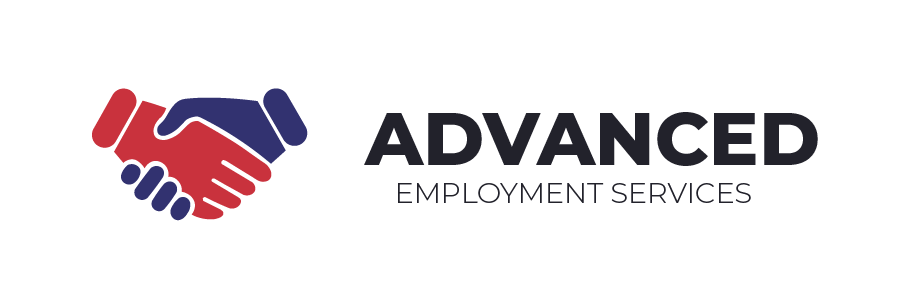Table of Contents
In today’s competitive business environment, building an engaging and productive office culture is essential for success. A strong culture not only fosters employee satisfaction and retention but also drives productivity and innovation. For employers looking to enhance their workplace, understanding the elements that contribute to a positive workplace is crucial. This article will explore strategies to create an environment where employees feel valued, motivated, and engaged, ultimately leading to greater productivity. Let’s dive into how to achieve this with insights from Advanced Employment Services.
Understanding Office Culture
Office culture refers to the shared values, beliefs, and practices that shape the work environment. It influences how employees interact with each other, their level of engagement, and their overall job satisfaction. A strong office culture aligns with the company’s mission and vision, creating a cohesive and positive workplace where employees can thrive.
Why It Matters
A well-established workplace contributes to:
- Higher Employee Engagement: When employees feel connected to their workplace, they are more likely to be engaged in their tasks. Engaged employees show higher levels of motivation, creativity, and commitment, which directly impacts productivity.
- Increased Productivity: A positive culture fosters collaboration and communication, leading to efficient workflows and improved performance.
- Employee Retention: Companies with a strong office culture experience lower turnover rates. Employees are more likely to stay with an organization where they feel valued and part of a supportive community.
- Attracting Top Talent: A reputation for having a great culture can attract highly skilled candidates who are looking for more than just a paycheck.

Key Components of an Engaging Workplace
Building an engaging and productive office culture requires attention to several key components:
Leadership and Management Style
Leadership plays a critical role in shaping office culture. Managers and leaders should:
- Lead by Example: Demonstrate the values and behaviors you want to see in your employees. When leaders embody the company’s culture, it sets the tone for the entire organization.
- Provide Clear Communication: Transparent communication helps build trust and ensures that employees understand their roles and the company’s goals.
- Encourage Feedback: Create an open-door policy where employees feel comfortable sharing their ideas and concerns. Listening to employee feedback fosters a sense of belonging and helps identify areas for improvement.
Employee Recognition and Appreciation
Recognizing and appreciating employees for their hard work is vital for maintaining high levels of engagement. Consider the following strategies:
- Regular Acknowledgment: Celebrate achievements, both big and small. Regular acknowledgment of employee contributions boosts morale and motivates others to perform well.
- Personalized Recognition: Tailor recognition to individual preferences. Some employees may prefer public recognition, while others may appreciate a private thank-you note.
- Incentives and Rewards: Implement a reward system that aligns with your office culture. Whether it’s bonuses, extra time off, or small perks, rewards reinforce positive behaviors.
Opportunities for Growth and Development
Providing opportunities for professional development is key to keeping employees engaged.
- Training Programs: Offer regular training sessions to help employees acquire new skills and stay up-to-date with industry trends.
- Career Advancement: Create clear pathways for career progression. Employees are more likely to stay engaged when they see opportunities for growth within the company.
- Mentorship: Pair less experienced employees with seasoned mentors who can guide them in their career development.
Work-Life Balance
Promoting a healthy work-life balance is essential for preventing burnout and maintaining productivity. Strategies to achieve this include:
- Flexible Work Arrangements: Allow employees to work remotely or adjust their hours to better fit their personal lives. Flexibility shows that you trust your employees to manage their time effectively.
- Encourage Time Off: Ensure employees take their allotted vacation time. Rested employees are more productive and less prone to stress.
- Promote Wellness: Offer wellness programs that address physical and mental health. This could include gym memberships, mental health days, or access to counseling services.
Fostering Collaboration and Teamwork
A collaborative environment enhances productivity by leveraging the collective strengths of your team. To foster collaboration:
- Create Open Workspaces: Design your office layout to encourage interaction. Open spaces, communal areas, and collaborative tools can break down barriers and facilitate teamwork.
- Team Building Activities: Organize regular team-building events to strengthen relationships and improve communication among employees.
- Cross-Departmental Collaboration: Encourage departments to work together on projects. Cross-functional teams bring diverse perspectives and skills, leading to innovative solutions.
Technology and Tools
Providing the right tools and technology is crucial for maintaining productivity and engagement. Consider:
- Updated Technology: Ensure that employees have access to the latest technology and software that enable them to perform their tasks efficiently.
- Collaboration Tools: Invest in tools that facilitate communication and collaboration, such as project management software, video conferencing, and instant messaging platforms.
- Training on Tools: Provide training to ensure that employees are comfortable using new tools and can leverage them to their full potential.
Physical Workspace Environment
The physical environment of the office can significantly impact productivity and engagement. To optimize the workspace:
- Ergonomic Furniture: Provide ergonomic chairs, desks, and equipment to ensure employees are comfortable and reduce the risk of physical strain.
- Natural Light: Maximize the use of natural light in the office. Exposure to natural light has been shown to improve mood and energy levels.
- Aesthetics: Create a visually appealing workspace with plants, artwork, and colors that promote a positive atmosphere.
Communication and Transparency
Open and honest communication is the backbone. Encourage transparency by:
- Regular Updates: Hold regular meetings to update employees on company progress, goals, and changes. This keeps everyone informed and aligned with the company’s objectives.
- Open Channels: Use communication tools that allow for open dialogue between employees and management. Whether it’s through intranet forums, suggestion boxes, or direct messaging, ensure that employees have a voice.
- Clear Expectations: Clearly communicate job expectations and performance metrics. When employees know what is expected of them, they can focus on meeting those goals.

Measuring and Improving Office Culture
Building an engaging and productive office culture is an ongoing process. Regularly assess your office culture and make adjustments as needed.
- Employee Surveys: Conduct regular surveys to gather feedback on employee satisfaction and engagement. Use this data to identify areas of improvement.
- Focus Groups: Organize focus groups to dive deeper into specific issues or gather ideas on how to enhance the workplace.
- Monitor Productivity Metrics: Track productivity metrics to see if they align with your office culture goals. If productivity is lagging, it may be time to reassess certain aspects of your culture.
- Stay Open to Change: Be willing to adapt and make changes as your company evolves. A workplace should be dynamic and responsive to the needs of your employees.
Conclusion
Creating an engaging and productive office culture is essential for the success of any organization. By focusing on leadership, recognition, growth opportunities, work-life balance, collaboration, diversity, technology, the physical environment, and communication, employers can foster a workplace where employees are motivated and productive. Advanced Employment Services is committed to helping businesses develop strong office cultures that not only enhance productivity but also attract and retain top talent.
As you implement these strategies, remember that building a positive workplace is a journey, not a destination. Regularly assess your progress, seek employee feedback, and be open to making necessary adjustments. With the right approach, you can create an office culture that drives engagement, innovation, and long-term success.



